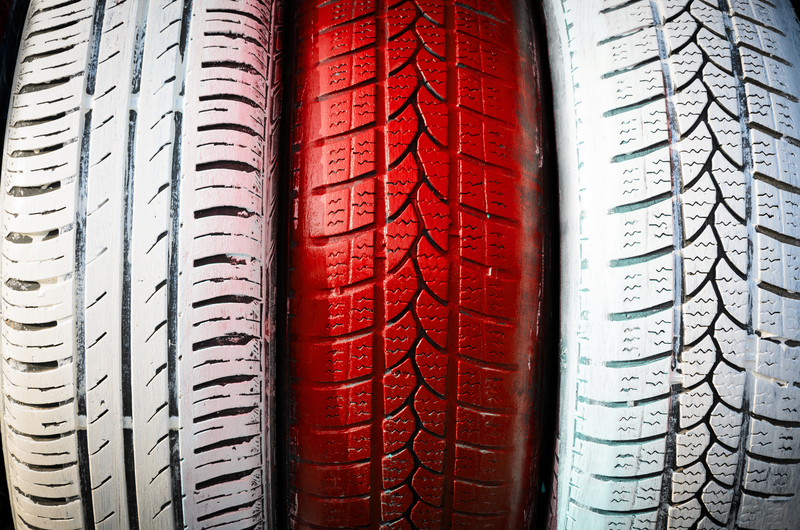How to Safely Throw Away Used PPE Without Harming Wildlife
The widespread use of personal protective equipment (PPE)--such as masks, gloves, and face shields--has dramatically increased in recent years, especially due to the global COVID-19 pandemic. While PPE has played a crucial role in safeguarding public health, the improper disposal of these items poses a serious threat to wildlife and the environment. Discarded masks, gloves, and other PPE products are frequently found in natural habitats, causing entanglement, ingestion, and pollution that can endanger countless animal species.
In this comprehensive guide, we will explore how you can throw away used PPE safely and responsibly, ensuring your actions do not harm wildlife. The article covers best practices, helpful tips, alternatives, and the importance of spreading awareness. Whether you're an individual, household, or business, every step towards responsible PPE disposal helps protect our planet and its creatures.
Understanding the Impact of Improper PPE Disposal on Wildlife
Before diving into proper disposal methods, it's essential to grasp how improperly discarded PPE can negatively affect wildlife and their habitats:
- Entanglement: Animals can become tangled in face mask straps or gloves, leading to injury, restricted movement, or even death.
- Ingestion: Many species mistake PPE for food. Consuming plastics can cause internal blockages, poisoning, or malnutrition.
- Habitat Pollution: Non-biodegradable PPE pollutes oceans, rivers, and landscapes for decades, disrupting habitats and food chains.
Understanding these dangers emphasizes the importance of safely discarding used PPE to minimize harm to wildlife.

How to Properly Dispose of Used PPE Without Harming Wildlife
The key to protecting wildlife from hazardous PPE waste lies in following safe and effective disposal practices. Here are steps to ensure you are disposing of your used PPE in a wildlife-friendly way:
1. Separate and Secure Your PPE Waste
- Never discard PPE directly on the ground, in waterways, or in nature.
- After use, place masks, gloves, and other PPE items in a sturdy plastic or biodegradable bag.
- Tie the bag securely to prevent any items from escaping or being picked up by animals.
2. Use Designated Bins for Used PPE Waste
- Many public areas now provide special bins for PPE disposal--use them whenever available.
- If no dedicated bin exists, dispose of PPE with your household waste. Do not recycle used PPE unless your local municipality specifically accepts PPE items for recycling, as these are typically considered contaminated and not recyclable through regular processes.
3. Cut Ear Straps and Bands
- Before disposing of masks, use scissors to cut the ear straps or bands. This simple step helps prevent wildlife from becoming entangled in discarded PPE.
- Encourage friends and family to do the same - it's a quick, effective habit!
4. Keep Used PPE Indoors until Disposal
- Store used PPE inside a closed, secure container (such as a lidded trash bin) away from pets, children, or wildlife before trash collection day.
- Avoid storing PPE outdoors, where wind or rain can scatter these materials into the environment.
5. Educate Others about Safe PPE Disposal
- Raise awareness in your community, workplace, or school about the dangers of littering PPE and share the best practices for disposal.
- Report any local litter issues to your municipality or environmental organizations to help address larger-scale problems.
Eco-Friendly Alternatives to Single-Use PPE
Reducing single-use PPE consumption is another powerful way to protect wildlife:
Reusable Masks
- Opt for multi-layered fabric masks that can be washed and reused safely as per health guidelines.
- Ensure masks fit your face properly to minimize contamination risks.
Reusable Face Shields
- Face shields made from durable plastic can be disinfected and reused multiple times, reducing waste.
Eco-Friendly Gloves
- Whenever possible, avoid unnecessary glove use. When required, choose gloves made from biodegradable materials to reduce environmental impact.
Why It's Important to Throw Away PPE Safely for Wildlife
The survival of many species depends on your disposal habits. Countless wildlife rescue centers have reported animals suffering from PPE-related injuries or fatalities. From birds and fish entangled in mask loops to marine mammals ingesting latex gloves, the consequences of improper PPE disposal are severe and far-reaching.
- Wildlife plays a critical role in maintaining ecosystem balance.
- PPE pollution affects humans too--through contaminated water, soil, and even the food chain.
Your Responsibility: Safe PPE Disposal Guidelines
By following safe and responsible PPE disposal guidelines, each person can make a significant contribution to preserving wildlife and keeping our natural environments clean.
How to Organize a Community PPE Clean-Up Event
Aside from properly discarding your own PPE, you can take an active role in addressing the problem on a larger scale. Community clean-up events are an effective way to remove litter, raise awareness, and build a network of environmentally conscious citizens. Here's how you can get involved:
- Gather Support: Contact friends, family, neighbors, and local organizations interested in environmental protection.
- Set a Date and Place: Identify hotspots where PPE litter accumulates, such as parks, beaches, or riversides.
- Provide Safety Gear: Supply volunteers with gloves, tongs, and bags for safe PPE handling.
- Sort Waste Correctly: Separate hazardous PPE from recyclable and organic material.
- Spread the Word: Use social media and community boards to inform others about the purpose and results of the clean-up.
Organizing and participating in such initiatives helps remove hazardous waste and motivates others to adopt eco-friendly habits for PPE disposal.
Frequently Asked Questions on Disposing of PPE Without Harming Wildlife
Is it okay to recycle used PPE items?
No. Most local recycling systems are not equipped to handle used PPE due to contamination risks. Unless a specific PPE recycling program exists in your area, place PPE items in general waste after following the steps above.
Why should I cut the straps of masks before disposal?
Mask straps are notorious for causing entanglement in birds, mammals, and marine life. Cutting the straps before discarding makes masks far less dangerous to wildlife.
Can biodegradable masks help reduce environmental impact?
Yes. Biodegradable PPE, such as masks made from natural fibers, break down more quickly in the environment and pose less risk to wildlife. However, they should still be disposed of responsibly.
What should I do if I find PPE litter in natural areas?
If it's safe to do so, use gloves or a litter picker to collect the items and dispose of them with your household garbage, following the secure disposal recommendations outlined earlier.
How Businesses and Organizations Can Manage PPE Disposal Responsibly
Workplaces and commercial entities are key stakeholders in protecting wildlife by ensuring safe PPE disposal:
- Install clearly marked PPE disposal bins at all entry and exit points.
- Train staff on safe removal, storage, and disposal procedures for PPE waste.
- Work with local disposal services to ensure prompt collection and proper processing of used PPE.
- Share the importance of wildlife-friendly practices with employees and customers.
By modeling eco-conscious PPE disposal techniques, businesses contribute to a sustainable future and inspire others to follow suit.
Innovative Solutions for Handling PPE Waste
Creative minds across the globe are addressing the PPE pollution problem by introducing innovations such as:
- Mask recycling stations, where specialized companies process and recover materials from PPE.
- Biodegradable PPE innovations that break down naturally, reducing longevity in the environment.
- Upcycling projects, where artists and communities transform PPE waste into artwork, furniture, or other reuse items.
Support these solutions when possible, and encourage the adoption of new ideas that help the planet and wildlife coexist safely.

Summary: How to Dispose of Used PPE Without Harming Wildlife
- Always bag and tie used PPE securely before disposal.
- Cut straps and bands on face masks and other items to prevent animal entanglement.
- Never litter--they belong in the trash, not nature.
- Choose reusable or biodegradable PPE alternatives whenever available.
- Educate others, participate in community clean-ups, and support innovation.
Your actions matter: Every step you take to safely dispose of PPE without harming wildlife helps protect the delicate balance of our ecosystems.
Conclusion: Protect Wildlife by Disposing PPE Responsibly
The increase in PPE usage does not have to equate to a rise in wildlife dangers. By staying informed and adopting safe disposal practices, every individual and business can make a difference. Together, we can minimize the impact of PPE waste, safeguard precious animal habitats, and encourage a healthier, more sustainable world for generations to come.
Remember, throwing away used PPE safely without harming wildlife is not just an environmental consideration--it's a moral responsibility. Make your disposal habits count and help pave the way for a cleaner, safer planet for all living beings.